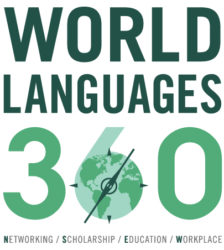We’re excited to announce the publication of an article, “Transitioning from Remote Instruction to Online Teaching and Learning.” You can find it on FLTMAG.com, or go directly to this link.
At this moment in time, educational institutions are grappling with whether to offer face-to-face instruction at all in the fall, perhaps beyond. Some have announced that, definitively, they will remain closed for in-person activities, while others have indicated their plans to be fully open. Others are exploring a new option, “hyflex,” in which instruction would take place online and learners would be permitted to engage in supplemental or optional learning activities in person. Most have not made a determination at this point, though it seems likely that at least a significant continuation of online teaching and learning will be in place.
With the sudden shift to so-called “remote instruction” as an emergency solution this past spring, it occurs to us that expectations with regard to high quality course content and learning experiences will be expected. Educators whose good-natured colleagues have been posting resources and offering advice have a short window of time to sift through it all, figure out what they can do to prepare to teach online in the fall, and roll up their sleeves. Recognizing that we’re adding another straw to the back of the camel, we’re hopeful this one will be well worth the read.
The article we’ve shared has 2 salient aspects. First, it represents a framework for applying best practices in online education generally to world languages courses. That framework enumerates several categories of over-arching aspects of the online teaching and learning experience, and then within each category, several criteria to consider. Second, it presents those criteria in terms of 3 levels. Level 1 is “remote instruction” which is meant to highlight practices, traits, and approaches that might comprise an emergency conversion of a face-to-face course to an online one. Level 2 is “online teaching and learning,” which presumes some time and effort has gone into revising a given course and aligning it with best practices for online education. Level 3 is “aspirational,” meant to inspire and encourage an educator who may be new to the online paradigm to think about what an ideal course might look like, particularly if this new reality gels and becomes part and parcel of education as we come to know it.
To assist instructors, instructional technologists, language learning resource center staff, and others who work with L2 instructors, the framework is presented via a tool that allows the reader to read through each criterion and its 3 levels, and then type in notes, a self-assessment, thoughts, resources, or any other text that the reader wishes to memorialize right there on the same screen. The resulting opus can be exported and saved for later review. It is our hope that world languages educators will find this article and its resulting document useful as a reference point as well as one more arrow in their summer (or beyond) quiver.
Comments and suggestions are welcome of course, and please let us know if you find the article to be beneficial.

